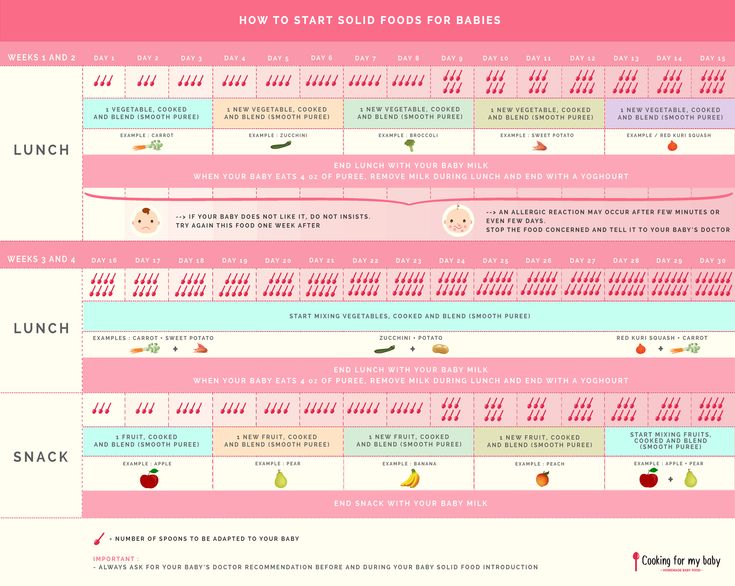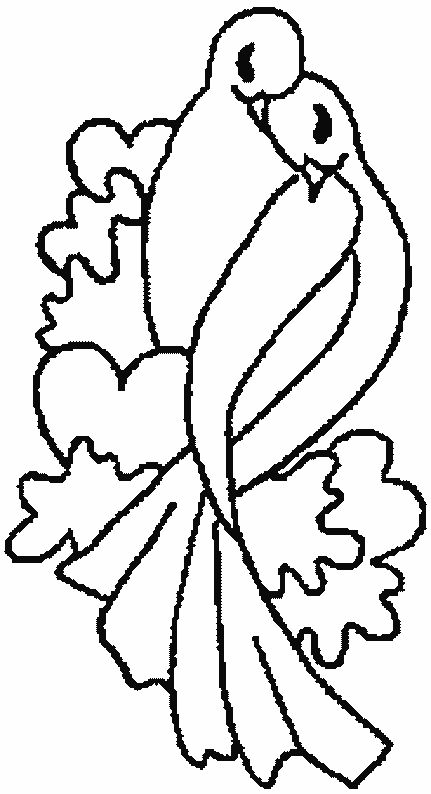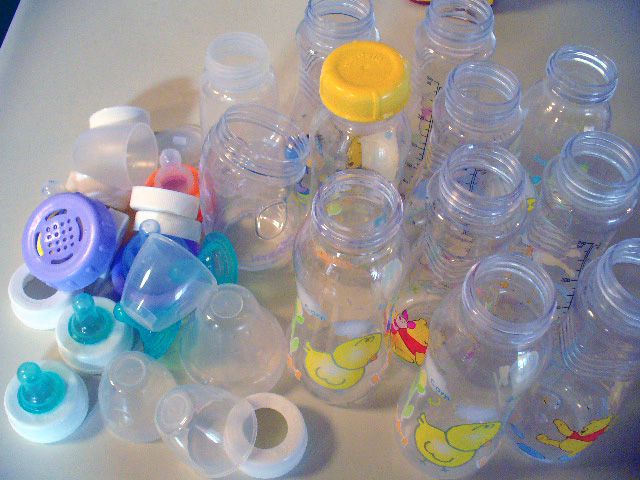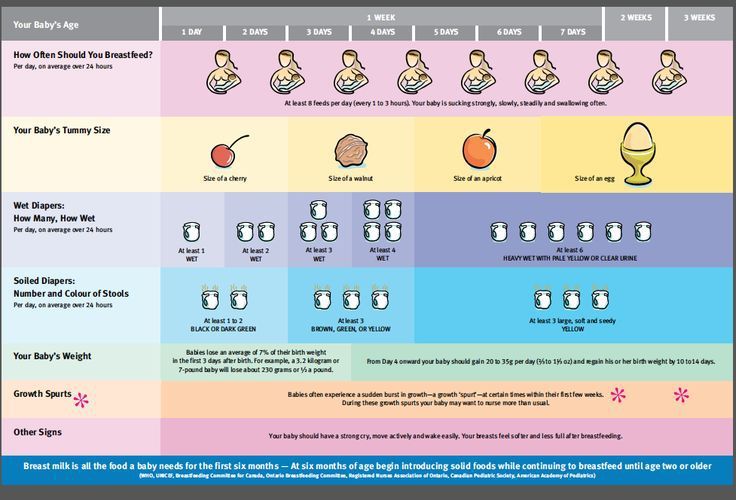Fussy baby during breast feeding
My baby fusses or cries when breastfeeding
By Kelly Bonyata, BS, IBCLC
© Lsantilli - Fotolia.com
Some babies will fuss, cry or pull off the breast during breastfeeding. There are a number of reasons why this might be happening. It’s pretty common to see this type of behavior at around 6-8 weeks, though it can occur at any time. If your baby is generally fussy (not just when nursing) see My baby is fussy! Is something wrong?
Determining the problem
Here are some of the problem-solving steps I go through when my baby is fussy at the breast or a mother asks me why her baby is fussing while breastfeeding:
Now infants can get
all their vitamin D
from their mothers’ milk;
no drops needed with
our sponsor's
TheraNatal Lactation Complete
by THERALOGIX. Use PRC code “KELLY” for a special discount!
How old is baby? Most babies go through growth spurts during the first few days at home and around 7-10 days, 2-3 weeks, 4-6 weeks, 3 months, 4 months, 6 months, 9 months, etc. Many babies are fussy during growth spurts.
Is baby working on anything new developmentally? Babies who are starting to notice the world around them can be notoriously distractible. Any kind of new developmental step that baby is working on can affect nursing temporarily, whether it be fussy nursing behavior or simply more frequent nursing.
When is baby fussing? To figure out the cause it’s helpful to pay attention to when the fussy behavior happens, both during the nursing session and during the day.
If baby is fussy right when your milk is letting down (or immediately after), there’s a good chance that the fussy nursing is related to a fast let-down. If baby is fussy before let-down, or a few minutes into nursing (and a while after let-down), then baby may be impatient for the fast flow of milk that comes with let-down. Fussing at the end of a nursing session (or what seems to be the end) may mean that baby needs to burp, or is ready to finish nursing, or just wants to suck (and doesn’t want to deal with a new let-down at this point), or wants to continue nursing on the other side or with a faster flow of milk.
If the fussy behavior is mainly in the mornings, it might be due to a faster than usual let-down if baby has just had a longer sleep period and mom’s breasts are fuller than usual. If baby is fussier during evening nursings, it may be due to the normal fussy time that most babies have during the evening. Although most babies don’t react to foods that mom eats, some do. If you eat a particular food at about the same time each day (or most days) and baby has a regular time where she fusses during nursing, try not eating that food for a week or two to see if things improve.
Does fussing occur on both sides equally or only on one side? Most moms have a faster let-down and/or a more abundant milk supply on one side than the other, so if your baby fusses more on one side, it may be due to these differences.
What else is going on with baby? Is she sick or teething? Is something new or different going on in her environment? Has she started solids or is she trying a new food? Is she exhibiting other symptoms besides the fussy nursing?
Below are discussions of some of the different things that can lead to fussy nursing behavior. Keep in mind that the problem may also be a combination of several things.
Keep in mind that the problem may also be a combination of several things.
Does baby need to burp?
Many babies will cry, fuss, pull off the breast, etc. if they need to burp. Try to burp between breasts and after a feeding, but don’t worry if baby does not burp and is content. Breastfed babies overall don’t take in as much air during a feeding as bottle-fed babies do, so usually don’t need to burp as often. If baby has been crying before she nurses, or is so hungry that she nurses “frantically” or if mom has a fast let-down, baby could be taking in more air and may need to be burped more often.
Burping is usually only necessary during the first few months, though it may extend longer. Once your baby is moving more freely, she will be able to relieve the gastric gas herself. This usually will occur between the 4th and 6th month, but may be shorter in some children and longer in others.
If baby has a hard time burping, try burping more often during a feeding. The best burping position is one that applies firm pressure to the baby’s tummy. Placing baby over the shoulder way up so that there is pressure on baby’s abdomen often works well. Walking around while doing this might distract her long enough to get a good burp. You may even want to lie baby down on her stomach and burp her that way.
The best burping position is one that applies firm pressure to the baby’s tummy. Placing baby over the shoulder way up so that there is pressure on baby’s abdomen often works well. Walking around while doing this might distract her long enough to get a good burp. You may even want to lie baby down on her stomach and burp her that way.
Growth spurt
Babies often pull off and fuss during growth spurts. Most babies go through growth spurts, sometimes called frequency days, during the first few days at home and around 7-10 days, 2-3 weeks, 4-6 weeks, 3 months, 4 months, 6 months and 9 months (more or less). More growth spurt information in this link.
Distractible baby
If baby seems to be pulling off the breast at any distraction (real or imaginary), then see The Distractible Baby.
Forceful let-down
Some babies will pull off the breast soon after let-down if mom has a forceful let-down. Baby may be frustrated by the too-fast flow of milk with let-down. A too-forceful let-down can also cause excessive gas or spitting up/vomiting. There is more information here on symptoms of and how to deal with a fast let-down reflex.
A too-forceful let-down can also cause excessive gas or spitting up/vomiting. There is more information here on symptoms of and how to deal with a fast let-down reflex.
Slow let-down
Some babies get very impatient if mom has a slow let-down. There is more information here on speeding up a slow let-down reflex.
Baby wants a faster milk flow
Even very young babies can be quick to notice that pulling off, kneading the breast, etc. can cause an additional let-down, and can facilitate a faster, easier milk flow. Some babies become impatient with the slower milk flow following the initial fast flow at let-down. This may or may not be related to a slow let-down.
When a feeding begins at the breast there are drops of milk. Then when the initial let-down occurs (several seconds to a minute into the feeding), the milk flow speeds up quite a bit. At that time it may drip very quickly, squirt, or even spray. Some minutes later it slows again and the baby must continue to suck vigorously in order to elicit further let-downs. This pattern can continue through successive, multiple let-downs as long as the baby is continuing to nurse vigorously. Eventually, baby will learn that the flow will pick back up again if she’ll only continue to vigorously suck/swallow.
This pattern can continue through successive, multiple let-downs as long as the baby is continuing to nurse vigorously. Eventually, baby will learn that the flow will pick back up again if she’ll only continue to vigorously suck/swallow.
With bottle feeding, the flow is instant and continuous. The baby is required to work very little. Once a baby has had a bottle, especially a lot of bottles, she may begin to prefer the ease of bottle-feeding over the work of breastfeeding. She may become frustrated at the breast after the first let-down occurs and the flow of milk begins to slow.
If baby is getting bottles you might consider putting them away, at least for a while. When you must use a bottle, only use a newborn nipple for as long as baby will tolerate it so that she never gets a really fast flow of milk from the bottle, but has to work a little more to get the milk.
Sometimes babies of moms with oversupply or fast let-down will also get very used to the fast flow and object when it normally slows somewhere between 3 weeks to 3 months.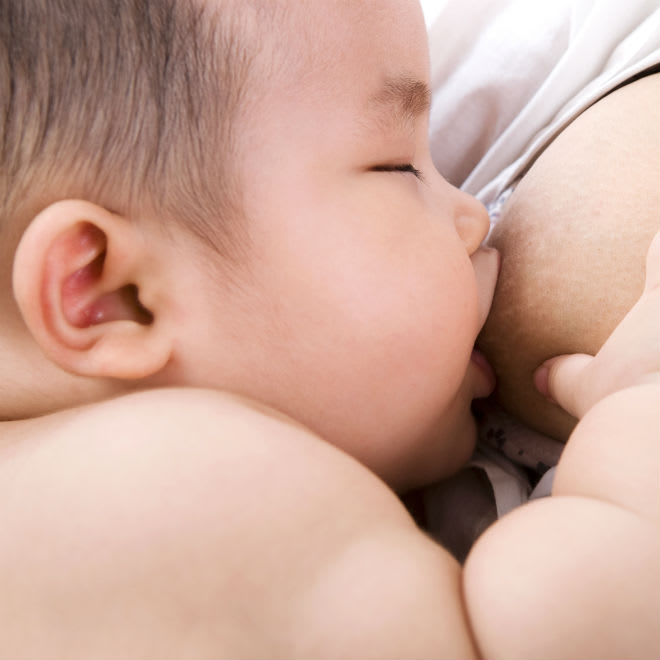
It can be helpful to do some breast compression when this fussiness starts or right before you expect it to. This will help speed up the milk flow again. Once compression stops helping, try switching baby to the other side when she begins to fuss and back and forth again (after using compression) as you need to.
Baby is done nursing for the moment
If baby is fussing after she’s been nursing for a while, and you’ve ruled out other causes, she may be in the process of changing her nursing pattern. Babies become very efficient at the breast with growth and maturity. They can milk the breast in a lot less time per feeding session than they required before. Baby’s frustration may just be a sign that she’s finished and wants to move on.
On a similar note, an occasional baby will just want to suck at the end of a nursing session and the flow of milk with let-down frustrates her. You might see if offering her a finger or pacifier (if baby is older than 4-6 weeks) to suck on during these times seems to help.
Baby prefers one side
Sometimes babies will refuse or fuss at a breast when the let-down is slower or too forceful, or the supply a bit lower. They in turn will prefer the side which lets down more/less quickly and in which the supply is more bountiful. See also: Lopsided! What can I do?
Fussy in the evening
Many young babies tend to pull off and fuss at the breast in the evening. See the article Cluster Feeding and Fussy Evenings.
Teething
Teething can cause fussy nursing behavior, as some babies experience gum discomfort with sucking. Baby might start to nurse, but then pull off and cry or fuss and not want to nurse anymore. See Teething for more information and tips.
Thrush
Frequent pulling off the breast can be a symptom of thrush.
Stuffy nose
A stuffy nose can cause fussy nursing behavior. If your baby has a stuffy nose and is having a hard time breathing and nursing at the same time, see colds & congestion.
Allergy or food sensitivity
Some babies with allergies or food sensitivities exhibit fussy nursing behavior. Often when there is a sensitivity to something in mom’s diet, baby will come to the breast hungry but when she tastes/smells something in the milk that will cause her GI distress, she pulls off, bats her head back and forth, etc. Sensitivities to foods in mom’s diet are rare. If this is the problem, you will most likely notice other symptoms, such as excessive spitting up or vomiting, colic, diarrhea, rash, persistent congestion or runny nose, or excessive gas. More information on food sensitivities in babies and links to more allergy information can be found in my article Dairy and other Food Sensitivities in Breastfed Babies.
Low milk supply
Low milk supply can cause baby to be fussy at the breast. If you feel that your milk supply may be low, see this page for more info: Increasing low milk supply.
Reflux
Reflux can result in baby being fussy at the breast. See Reflux and Breastfeeding for more information.
See Reflux and Breastfeeding for more information.
Tongue-Tie
Tongue-Tie can result in baby being fussy at the breast. See Breastfeeding a Baby with Tongue-Tie (Resources) for more information.
Cluster Feeding and Fussy Evenings • KellyMom.com
By Kelly Bonyata, BS, IBCLC
It is very common for babies to be fussy and nurse very often in the evenings, particularly in the early months.
My daughter had a fussy time every evening for a couple of months (yes, it does go away!). I spent weeks camped out on the end of the sofa with a constantly nursing and/or fussy baby every evening from about 6 to 10 PM.
With my son, we didn’t have the luxury of being able to sit down. Alex was unhappy and crying unless he was upright and being walked around at this time of day (and sometimes this only helped him to be less unhappy). He would occasionally have a very fussy time during the day, too. Nursing rarely helped to calm his fussiness (unlike with my daughter), so I usually didn’t have that tool to work with (though I always tried).
His fussiness was such that I looked into other causes (such as food sensitivity), but we never determined any reason for it and he was all smiles the rest of the time. The fussiness gradually went away between 3 and 4 months, as is the norm, but the first few months were hard. Nowadays, the typical comment that I hear about him is “Is he always this happy?” So remember: this, too, will pass…
Cluster feeding, also called bunch feeding, is when babies space feeding closer together at certain times of the day and go longer between feedings at other times. This is very common, and often occurs in the evenings. It’s often -but not always- followed by a longer sleep period than usual: baby may be “tanking up” before a long sleep. For example, your baby may nurse every hour (or even constantly) between 6 and 10 PM, then have a longish stretch of sleep at night – baby may even sleep all night.
Now infants can get
all their vitamin D
from their mothers’ milk;
no drops needed with
our sponsor's
TheraNatal Lactation Complete
by THERALOGIX. Use PRC code “KELLY” for a special discount!
Use PRC code “KELLY” for a special discount!
Cluster feeding often coincides with your baby’s fussy time. Baby will nurse a few minutes, pull off, fuss/cry, nurse a few minutes, pull off, fuss/cry… on and on… for hours. This can be VERY frustrating, and mom starts wondering if baby is getting enough milk, if something she is eating is bothering baby, if EVERYTHING she is doing is bothering baby… It can really ruin your confidence, particularly if there is someone else around asking the same questions (your mother, your husband, your mother-in-law).
This behavior is NORMAL! It has nothing to do with your breastmilk or your mothering. If baby is happy the rest of the day, and baby doesn’t seem to be in pain (as with colic) during the fussy time – just keep trying to soothe your baby and don’t beat yourself up about the cause. Let baby nurse as long and as often as he will. Recruit dad (or another helper) to bring you food/drink and fetch things (book/remote/phone/etc. ) while you are nursing and holding baby.
) while you are nursing and holding baby.
Does this mean that baby needs more milk than I can provide?
No. Don’t give baby a bottle — supplementation will only tell your body that you need LESS milk at this time, and that will not help matters. Also, keep in mind that formula fed babies experience fussy periods in the evening, too — fussy evenings are common for all young babies, no matter how they are fed. The Academy of Breastfeeding Medicine spells this out in their supplementary feeding guidelines:
There are common clinical situations where evaluation and breastfeeding management may be necessary, but supplementation is NOT INDICATED including… The infant who is fussy at night or constantly feeding for several hours.
Why do babies fuss in the evening?
One frequently-heard explanation for baby’s fussiness in the evenings is that milk volume tends to be lower in the evening due to the natural cycling of hormones throughout the day. However, Dr. Peter Hartmann, a breastfeeding researcher, has said that in the women he has studied, milk volume is not low at this time of day. Even if milk volume is lower in the evening, fat content is typically higher in the evening (particularly if baby is allowed to control this via cue feeding), so the amount of calories that baby is getting should not be significantly different. Milk flow can be slower in the evening, which may be frustrating for some babies.
However, Dr. Peter Hartmann, a breastfeeding researcher, has said that in the women he has studied, milk volume is not low at this time of day. Even if milk volume is lower in the evening, fat content is typically higher in the evening (particularly if baby is allowed to control this via cue feeding), so the amount of calories that baby is getting should not be significantly different. Milk flow can be slower in the evening, which may be frustrating for some babies.
Doctors often attribute evening fussiness to baby’s immature nervous system (and the fussiness does end as baby gets older, usually by 3-4 months). However, Dr. Katherine Dettwyler (who does research on breastfeeding in traditional societies) states that babies in Mali, West Africa and other traditional societies don’t have colic or late afternoon/evening fussiness. These babies are carried all day and usually nurse several times each hour.
So perhaps none of these explanations is a complete answer to baby’s evening fussiness. For many babies, the fussy time seems to be characterized by a need to have small quantities of milk at frequent intervals, combined with lots of holding, cuddling and movement. Babies who are offered as much expressed milk or formula as they will take by bottle [note: this practice will decrease your milk supply!] often behave in exactly the same way in the evenings. Baby takes a small amount and dozes (and fusses), then a little more, and so on. Perhaps babies “remember” mom being very active during her pregnancy at these times, and want to be held, rocked, and nurtured constantly again.
For many babies, the fussy time seems to be characterized by a need to have small quantities of milk at frequent intervals, combined with lots of holding, cuddling and movement. Babies who are offered as much expressed milk or formula as they will take by bottle [note: this practice will decrease your milk supply!] often behave in exactly the same way in the evenings. Baby takes a small amount and dozes (and fusses), then a little more, and so on. Perhaps babies “remember” mom being very active during her pregnancy at these times, and want to be held, rocked, and nurtured constantly again.
Perhaps babies simply need to nurse more often at this time — rather than consume more milk.
Soothing techniques for the fussy times
- Wear baby in a sling or baby carrier. This will free one or both hands for other tasks (fixing dinner, caring for other children) while you hold, soothe and nurse your baby.
- Change of pace.
 Let dad have some “baby time” while mom takes a shower or simply gets some time to herself to relax and regroup after a long day.
Let dad have some “baby time” while mom takes a shower or simply gets some time to herself to relax and regroup after a long day. - Go outside. Relax baby (and mom too) with a walk, or just sit and enjoy the outdoors. Try this a little before baby’s regular fussy time.
- Soothe with sound. Sing, hum, talk, murmur shhhh, listen to music, or use ‘white noise.’ Try different types of sound, different styles of music and singers with different types of voices.
- Soothe with rhythmic motion. Walk, sway, bounce, dance, swing, or even try a car ride.
- Soothe with touch. Hold or bathe baby, try baby massage.
- Reduce stimulation. Dim lights, reduce noise, swaddle baby.
- Vary nursing positions. Try side lying, lying on your back to nurse with baby tummy to tummy, etc.
- Nurse in motion (while rocking, swaying, walking, etc.).
- Combine rhythmic motion with soothing sounds.

- Avoid scheduling, even more so in the fussy evening hours.
- More soothing techniques.
More resources for fussy babies
@ KellyMom- My baby is fussy! Is something wrong? What is normal, reasons for fussing, and comfort measures for baby.
- My baby is gassy. Is this caused by something in my diet?
- The Distractible Baby
- Is your baby nursing all the time?
- Fussy babies – is it the arsenic hour? from the Australian Breastfeeding Association
- Cluster Feeding by Lisa Hassan Scott, from the September 2014 Breastfeeding Today
- Infant fussiness from Mother-2-Mother.com
- The Pitfalls of Supplementing a Breastfed Baby by Cheryl Taylor White
- Fussy periods and wonder weeks from the Australian Breastfeeding Association
Helpful books
The Happiest Baby on the Block: The New Way to Calm Crying and Help Your Baby Sleep Longer
by Harvey Karp, MD
The Fussy Baby Book: Parenting Your High-Need Child From Birth to Age Five
by William Sears, MD and Martha Sears, RN, IBCLC
How do you know if you have enough breast milk?
Nowadays, almost all mothers want to breastfeed their babies. But not one mother during pregnancy does not think that there may be any problems with feeding. These problems overtake already in the hospital. It seems that all the problems, suffering, pain are behind you, your baby is next to you, but now a new stage in your life begins.
But not one mother during pregnancy does not think that there may be any problems with feeding. These problems overtake already in the hospital. It seems that all the problems, suffering, pain are behind you, your baby is next to you, but now a new stage in your life begins.
Breastfeeding. Will I succeed?
Every woman is capable of breastfeeding. The main attribute for this is your chest and a positive attitude. Every woman has colostrum, that is, the first milk appears at different periods: for someone in the middle of pregnancy, for someone on the day of birth, sometimes it comes only on the third day.
If colostrum does not come on the third day, then you should not give up. Continue to apply the baby to the breast and this will stimulate the production of milk. Find a comfortable position for you and your baby and enjoy being with each other.
Preparation for feeding during pregnancy
You don't have to worry about your breasts losing their shape.
The first thing you need to do is to buy good support underwear to lighten your breasts. Owners of large breasts should use such a bra from the middle of pregnancy. When buying this bra, keep in mind that your breasts will increase in volume when the milk arrives.
Also consider comfortable nursing clothes. It will be useful to you already in the hospital.
No need to torture your nipples during pregnancy by rubbing them with a terry towel, wearing rags in your bra and other manipulations with your breasts.
Examine the shape of your nipples: they may be flat or protruding.
A flat nipple will be more difficult for a baby to latch on to and will most likely require silicone breast pads so that the baby can draw on the milk. Don't worry that you will feed your baby all the time through these pads, after a couple of weeks the baby will pull on your nipples.
The most sensible advice for mothers when it comes to breastfeeding is to cook the head, not the chest.
Does the baby need formula?
What to do if the milk does not come? Here, rather, everything depends on the mother and the behavior of the child, if the child cries, perhaps he is hungry. The hospital staff will offer you to feed your baby. In principle, the baby has enough colostrum for the first days of life, but if it is not there, do not torment the child, feed the mixture and continue to apply.
What happens if a child loses weight?
Weight loss of 10% at the time of discharge is considered normal - the baby has edema , a lot of meconium comes out. Usually a baby gains 150-200 grams in the first week of life.
How can you tell if your baby is getting enough milk?
The main indicator that the baby is full is his good behavior. If the baby lets go of the breast after feeding, plays for a while, and then falls asleep, then he has enough milk. If the baby is capricious, sleeps poorly, you should think about the lack of milk.
The first and surest way to check is baby weights. The disadvantage of this method is the purchase of such scales, which are not cheap. You can ask your hospital if they rent weights or look in ads.
So, we weigh the baby before feeding and after, and by the difference we look at how much the baby ate. The norm for children under 4 months is 1/5 of their weight. For example, with a child weighing 3500 grams, his norm will be 700 grams of milk per day. With 7 feedings a day, the baby should gain about 100 grams after feeding.
The second method is the old method called “wet diapers”. There are two ways to carry out this method. The first involves the rejection of modern diapers for a day. You can buy a piece of gauze and make diapers, you can just put the child in sliders, by the way, in the sliders it will be clearly visible when the child has urinated. For example, we start the experiment at 7 am today and end at 7 am tomorrow. These days you need to feed the baby only breast milk and not give any more liquid.
These days you need to feed the baby only breast milk and not give any more liquid.
Record the number of times the child has urinated on the tablet, so it is more convenient to count.
Do not worry that you will not succeed, be patient and dry things.
During the day you can do this:
- normal or disposable absorbent diapers can be used;
- the child may be dressed in a romper suit or gauze diaper;
It is better to cancel a walk in the cold season. In the summer, we cover the stroller with a diaper and take clean clothes with us.
At night it is more difficult, but it can be done really well. We act in the same way as with the stroller - we cover the bed with a diaper. It is better to prepare a supply of diapers for the night. You may have noticed that the child pees, when he comes out of deep sleep, he begins to move.
So the day has passed. Wet diapers will tell us if your baby is getting enough milk and if the kidneys are working well. Urine during the day can be transparent, and in the morning it can be more concentrated, that is, it can be yellow.
Wet diapers will tell us if your baby is getting enough milk and if the kidneys are working well. Urine during the day can be transparent, and in the morning it can be more concentrated, that is, it can be yellow.
The number of urinations depends on the age of the child:
- 1-3 days a day 2-5 urinations;
- 3-6 days a day 4-8 urinations;
- 6-14 days a day approximately 12 urinations;
- after 14 days a day 12 or more urination .
Test result (after 14 days):
- 12 or more diapers - your lactation is normal;
- 8-10 diapers per day - lactation is reduced;
- less than 8 diapers - the baby does not have enough of your milk. Discuss supplementary feeding with your pediatrician.
The second method of counting urination baby is the weighing of wet diapers . Day collect use diapers , each of them is tightly tied in a bag to avoid evaporation of urine, feces are cleaned from diapers . In a day, we weigh the use of diapers and the same number of clean diapers . The difference between used and clean diapers is the amount of urine per day. Next, divide this number by 30 (the approximate weight of one urination) and get the number urination .
Day collect use diapers , each of them is tightly tied in a bag to avoid evaporation of urine, feces are cleaned from diapers . In a day, we weigh the use of diapers and the same number of clean diapers . The difference between used and clean diapers is the amount of urine per day. Next, divide this number by 30 (the approximate weight of one urination) and get the number urination .
Such weighings are carried out either once to compile a general picture, or over a couple of days to dispel doubts that there is not enough milk. Weigh your child once a week.
What if the baby does not get enough breast milk?
First of all, calm down and don't panic. Next, if possible, find a lactation consultant. Perhaps you have the wrong feeding process. Perhaps the baby is not grasping the breast correctly, is the baby tightly pressed against your body with the tummy.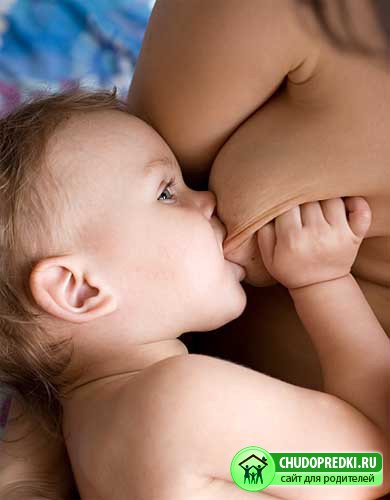 It would seem nonsense, but perhaps the whole problem is precisely in this. Also, the consultant should examine your child, he may have a short bridle, the anatomy of the jaw, you may need to try other positions for comfort and proper grip. Also pay attention to how often you change breasts, perhaps the baby is sucking out your foremilk, which is less fat.
It would seem nonsense, but perhaps the whole problem is precisely in this. Also, the consultant should examine your child, he may have a short bridle, the anatomy of the jaw, you may need to try other positions for comfort and proper grip. Also pay attention to how often you change breasts, perhaps the baby is sucking out your foremilk, which is less fat.
Increased lactation
In order to increase lactation, two breasts can be given in one feeding. In order to prevent the baby from sucking only the foremilk, it is necessary to monitor when the baby stops swallowing milk, but simply sucks at the breast
An equally important aspect is the calmness of the mother. Households should take care during these periods so that the mother does not get tired of household chores, help her in everything and be affectionate with her.
An excellent stimulation of lactation is facilitated by the fact that mother and baby feel each other's skin.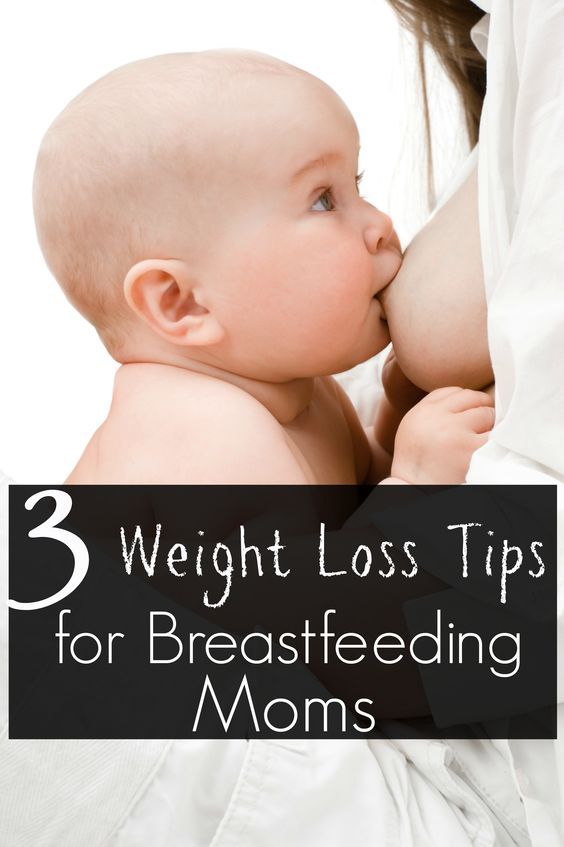
When a baby suckles, the mother's brain receives a signal about how much milk her child needs. If the baby is hungry, then, accordingly, he will suckle the breast more, in response to this, the mother's brain will send more hormones that stimulate milk production, which then send a command to your breast to produce more milk. This is the supply-demand system. That is why it is important not overdo it with hormone signals.
If you still need to stimulate the production of milk, then you can use lactogonal agents: fennel seeds, lactation teas, appilac .
Breast massage with oils also helps.
In bad weather, refuse to walk, lie in an embrace with the baby, this will also be a good stimulation.
If this does not help, then consider supplementing your baby with formula.
Complementary formula.
Formula supplementation is a type of infant feeding that combines breastfeeding and formula feeding. But the percentage of the mixture per day should not be more than 50%, otherwise such feeding will be considered artificial.
Supplementation with formula during breastfeeding is required temporarily. The task of the mother in this situation is to maintain lactation, and not transfer the child to the mixture.
In the first six months of a baby's life, he is prescribed supplementary feeding with formula, since it is not allowed to feed cereals and vegetable purees until six months. After six months, the issue of supplementary feeding is decided individually.
Start giving your baby some formula, approximately 15-30 grams per feeding. We monitor urination, if less than 8 times a day, then the same amount of the mixture should be added. If the baby urinates more than 15 times, then the amount of the mixture can be slightly reduced.
Offer the mixture strictly after breastfeeding. If he has not eaten it, then it is poured out and a new one is prepared for the next feeding. If the baby does not finish eating the formula on subsequent occasions, try removing it and doing the wet diaper test again.
If the baby does not finish eating the formula on subsequent occasions, try removing it and doing the wet diaper test again.
Can full breastfeeding be brought back?
Moreover, this is what needs to be achieved. Lactation consultants have a lot of experience in transitioning from mixed to natural feeding. Of course, this is not a one-day job, mom needs to be patient, be confident in her abilities.
It is necessary to breastfeed before each feeding with the formula, gradually reducing its amount, but we also do a wet diaper test to understand if the baby is full. Applications during breaks should be very frequent.
So, to return to breastfeeding you need:
- to restore bodily contact;
- accustom the baby to the breast;
- gradually reduce the amount of supplementary feeding;
- disperse lactation.
How many months to breastfeed?
There is no consensus on the duration of breastfeeding. There are opinions that a child needs to be fed up to a year, others say that up to three years, others say until the moment the child refuses to breastfeed.
There are opinions that a child needs to be fed up to a year, others say that up to three years, others say until the moment the child refuses to breastfeed.
The World Health Organization recommends breastfeeding your baby until two years of age. But from 6 months of age, your milk can't provide all of your baby's nutritional needs, and it's time to introduce complementary foods.
Most often, a one-year-old child has only nighttime breastfeeding, as it is convenient for both mother and baby.
Benefits of long-term breastfeeding:
- nutritional value;
- protection against diseases;
- reducing the risk of allergies;
- the formation of the correct bite.
You should not stop breastfeeding if your baby is sick, it is during this period that your milk adjusts to his needs and can be the best medicine.
How to set up a milk bank?
Your lactation has picked up and now you have more than enough milk. In such a situation, we create a milk bank. To do this, you need a breast pump and airtight milk storage bags. You can even without a breast pump if you have learned how to pump with your hands. We express milk, seal it in an airtight bag and the supply is ready.
In such a situation, we create a milk bank. To do this, you need a breast pump and airtight milk storage bags. You can even without a breast pump if you have learned how to pump with your hands. We express milk, seal it in an airtight bag and the supply is ready.
Breast milk can be stored this way for up to 3 months.
To feed your baby with such milk, you just need to take it out of the freezer and defrost it, warm it up a little and you can feed the baby.
Can I breastfeed my second child?
It's real. The main thing is to believe in yourself. It is best to find a lactation consultant who would help from the first days.
Is it necessary to follow the diet of a breastfeeding mother?
You need to eat more consistently during the first 2 weeks of your baby's life. Your diet should include cereals, not fatty meat, fish. Vegetables should not be bright colors.
Then gradually introduce one product into the diet and monitor the baby's reaction. If you are not prone to allergic reactions, then most likely your child is too.
Eating for two, as our grandmothers said, is not necessary. It is enough to increase your diet by 500 kilocalories.
The best diet during breastfeeding is proper nutrition with a varied diet.
Breast care while breastfeeding
No need to wash your breasts with soap before every feeding.
It is necessary to do air baths for the chest before feeding, so that the chest would rest from clothes.
You don't need to put nipple ointments on your breasts if your breasts are okay. We use ointment if there really are cracks. The best cream will be your milk. Just after each feeding, you need to squeeze out a little milk and lubricate the nipples with it.
Warm your breasts before feeding to help you relax and increase your milk supply.
If breastfeeding failed
The main thing is not to self-flagellate. You have done a great job in order to establish feeding and feed the baby with your milk.
The next step is to choose an adapted formula. Sometimes it takes a while to get the mix right.
The main thing to remember is that your baby will love you whether you breastfeed or formula feed him!
Baby refuses to breastfeed: why and what to do?
A baby may refuse to breastfeed for several reasons.
- There is "little" milk in the breast . In this case, it is necessary to start using the whole complex of agents that stimulate the excretion of milk from the mammary gland: frequent attachment of the child to the breast, taking a hot drink (lactagon teas) for 5-10 minutes. before feeding, warm compresses from terry towels on both mammary glands for 10-15 minutes.
 before feeding, the use of contrast dousing on the area of the mammary glands, homeopathic remedies. With a good mood of the mother, good rest and nutrition, the condition gradually disappears.
before feeding, the use of contrast dousing on the area of the mammary glands, homeopathic remedies. With a good mood of the mother, good rest and nutrition, the condition gradually disappears. - There is "a lot" of milk in the breast and it is so "tight" that it is difficult for the baby to latch onto the nipple. In this case, it is necessary to first decant the breast (express the first portions of milk), make it softer and more comfortable for the baby to capture.
- Flat nipples. In this situation, on your own or with the help of a lactation consultant, you can "shape" the nipple by correctly inserting it into the baby's mouth. You can also use nipple correctors and special nipple covers through which you can feed your baby.
- Mother's nutritional features . Breast milk can change its smell and taste if the mother ate garlic, onions, or other pungent-smelling foods or spices the day before. In this case, it is necessary to exclude these products and other spices from the diet.

- Use for feeding bottle . If a child has tried supplementary feeding (mixture, expressed milk) from a bottle, then he may begin to be lazy to suckle. In this situation, for supplementary feeding, it is necessary to use nipples with small holes from which nutrition is difficult to enter, so that the child does not forget how to work while sucking. It is also necessary to remember that supplementary feeding should be given only after breastfeeding, and not before and not instead.
- Illness of a child. Refusal to breastfeed can also be a sign of the onset of some kind of ailment (disease) in a child (teething, onset of SARS, fever). In this case, the overall behavior of the child changes - he becomes more capricious, less active, lethargic. In this case, you can offer the child expressed milk from a spoon and breastfeed only when he really wants to.
- Exciting environment. If there are many distractions around the child - the TV is on, talking on the phone, the presence of strangers, bright lights, unusual surroundings, etc.





